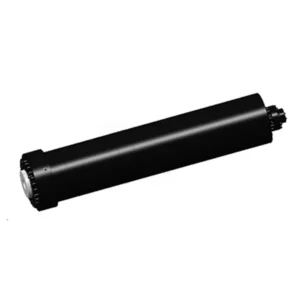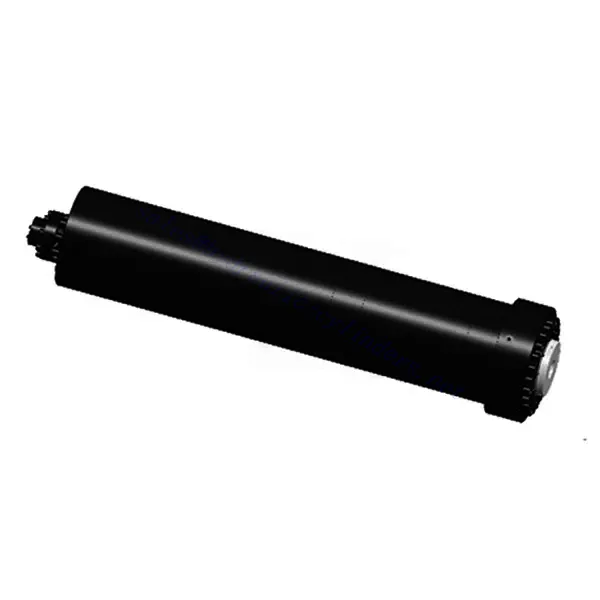Filter Press Cylinder
In qualità di uno dei produttori, fornitori ed esportatori di prodotti meccanici, offriamo cilindri idraulici e molti altri prodotti.
Per maggiori dettagli, contattateci.
Posta:sales@hydraulic-cylinders.net
Produttore fornitore esportatore di cilindri idraulici.
Filter Press Cylinder

The filter press cylinder is a highly effective tool designed to optimize filtration efficiency and performance in various industrial applications. With its robust construction and advanced features, this cylinder is crucial in separating solids from liquids, ensuring superior filtration outcomes.
The filter press cylinder is vital to achieving efficient and high-performance filtration. With its durable construction, efficient filtration capabilities, versatile compatibility, and customizable options, this cylinder delivers exceptional results in various industrial applications. By following the recommended usage methods and maintenance practices, you can maximize the filter press cylinder’s performance, longevity, and reliability in your filtration processes. This advanced and reliable cylinder will elevate your filtration efficiency and achieve superior results.
Filter Press Cylinder Key Characteristics:
- High-Quality Construction:
- The filter press cylinder is meticulously crafted using premium-grade materials, ensuring durability and longevity.
- Its sturdy construction enables it to withstand the demanding conditions of filtration operations, delivering reliable performance.
- Efficient Filtration:
- This cylinder is engineered to provide efficient and precise filtration by effectively separating solids from liquids.
- The filter press cylinder optimizes filtration, producing cleaner and higher-quality filtrate.
- Versatile Compatibility:
- The cylinder is designed to be compatible with various filter press systems, making it adaptable to different industrial filtration setups.
- Its versatility allows seamless integration into existing filtration processes, enhancing overall efficiency.
- Customizable Options:
- The filter press cylinder offers customizable options to cater to specific filtration requirements.
- Tailor the cylinder’s specifications, such as size, filtration capacity, and pressure rating, to meet the unique needs of your filtration application.
Filter Press Cylinder Parameter:
| Product Name | Filter Press Hydraulic Cylinder |
| Features: | Provide thrust/push the pressure plate to compress/pull pressure to compress the pressure plate |
| Bore diameter: | 160mm~580mm |
| Rod diameter: | 110mm~410mm Stroke ≤2600mm |
| Thrust force: | Maximum 11889KN (Cylinder diameter 580mm/pressure 45MPa) |
| Filter Press Cylinder Applications: | Filter Press |
Rod diameter: 110mm~410mm
Stroke ≤2600mm
(Cylinder diameter 580mm/pressure 45MPa)
Press Cylinder Factory:

Usage Method Of Filter Press Cylinder:
- Installation:
- Begin by ensuring that the filter press system is properly set up and ready for installation.
- Carefully position the filter press cylinder within the designated mounting area of the filter press framework.
- Securely fasten the cylinder using appropriate bolts or clamps, ensuring a stable and reliable connection.
- Connection and Sealing:
- Connect the filter press cylinder to the hydraulic system of the filter press machine.
- Verify that all hydraulic connections are secure and leak-free.
- Properly seal the cylinder to prevent bypassing or leakage during filtration.
- Adjusting Filtration Parameters:
- Familiarize yourself with the filtration parameters required for your specific application.
- Adjust the filtration parameters, such as pressure, temperature, and duration, according to the filtration process requirements.
- Ensure the filter press cylinder can handle the specified parameters without compromising integrity.
- Initiating Filtration:
- Activate the filter press machine to initiate the filtration process.
- The filter press cylinder will apply pressure to the filter plates, promoting the separation of solids from the liquid.
- Monitor the filtration process closely to ensure optimal performance and adjust parameters as necessary.
How To Repack A Hydraulic Cylinder?
Repacking a hydraulic cylinder involves replacing the seals within the cylinder to restore its performance and prevent leakage. Here’s a step-by-step guide on how to repack a hydraulic cylinder:
- Gather Necessary Tools and Materials:
- Safety goggles and gloves
- Wrenches or socket set
- Seal kit (including new seals and O-rings)
- Cleaning solvent or hydraulic oil
- Rags or towels
- Prepare the Work Area:
- Ensure you have a clean, well-lit workspace to disassemble and reassemble the hydraulic cylinder.
- Lay down a protective covering to catch any spills or debris.
- Release Hydraulic Pressure:
- Shut off the hydraulic system and relieve the pressure in the cylinder by activating the control valve or removing the hydraulic hose.
- Engage any safety locks or blocks to prevent accidental movement of the cylinder during the repacking process.
- Remove the Cylinder:
- Detach the hydraulic cylinder from the equipment or machinery using appropriate wrenches or a socket set.
- Take note of the cylinder’s orientation and position to ensure proper reinstallation.
- Disassemble the Cylinder:
- Carefully remove the cylinder end caps or retaining bolts to access the piston and seals.
- Pay attention to the order and arrangement of the components as you disassemble the cylinder.
- Clean the Cylinder:
- Clean all the cylinder components using a cleaning solvent or hydraulic oil, including the piston, cylinder bore, and end caps.
- Wipe away any dirt, debris, or old lubricant from the surfaces using rags or towels.
- Remove Old Seals:
- Identify the seals that need to be replaced and carefully remove them from the piston and cylinder bore.
- Use a seal pick or a small screwdriver to gently pry out the seals, taking care not to damage the cylinder or piston surfaces.
- Install New Seals:
- Take the new seals from the seal kit and apply a thin coat of hydraulic oil to lubricate them.
- Carefully insert the new seals into their grooves on the piston and cylinder bore.
- Ensure the seals are properly seated and aligned.
- Reassemble the Cylinder:
- Reassemble the cylinder in the reverse order of disassembly, following the manufacturer’s guidelines if available.
- Securely tighten the retaining bolts or end caps, ensuring proper alignment and torque specifications.
- Test and Check for Leaks:
- Reconnect the hydraulic cylinder to the equipment or machinery.
- Slowly pressurize the hydraulic system and activate the cylinder to check for any leaks or abnormal operation.
- Inspect all connections and seals for signs of leakage.
- Reintegrate the Cylinder:
- Once you have confirmed that the repacked cylinder is functioning properly and without leaks, reinstall it back into the equipment or machinery.
- Ensure the cylinder is properly aligned and securely fastened.
Capacità e capacità della fabbrica:
(1) Montaggio
We have a first-class independent research and development assembly platform. The hydraulic cylinder production workshop has four semi-automatic lifting cylinder assembly lines and one automatic tilt cylinder assembly line, with a designed annual production capacity of 1 million pieces. The special cylinder workshop is equipped with various specifications of a semi-automatic cleaning assembly system with a designed annual production capacity of 200,000 and equipped with famous CNC machining equipment, a machining center, a high-precision cylinder processing special equipment, a robot welding machine, an automatic cleaning machine, automatic cylinder assembly machine, and automatic painting production line. Existing critical equipment of more than 300 sets (sets). The optimal allocation and efficient use of equipment resources ensure the accuracy requirements of products and meet the high-quality needs of products.


(2) Lavorazione
L'officina di lavorazione è dotata di un centro di tornitura su rotaia inclinata personalizzato, di un centro di lavorazione, di una levigatrice ad alta velocità, di un robot di saldatura e di altre attrezzature correlate, in grado di gestire la lavorazione di tubi cilindrici con un diametro interno massimo di 400 mm e una lunghezza massima di 6 metri.

(3) Saldatura

(4) Verniciatura e rivestimento
Con linee automatiche di verniciatura a base d'acqua a cilindro di piccole e medie dimensioni, per realizzare il carico e lo scarico automatico con robot e la spruzzatura automatica, la capacità di progettazione è di 4000 pezzi per turno;
Disponiamo anche di una linea di produzione semiautomatica di vernici per cilindri di grandi dimensioni alimentata da una catena di potenza, con una capacità di progettazione di 60 casse per turno.


(5) Test
Disponiamo di strutture di ispezione e banchi di prova di prim'ordine per garantire che le prestazioni del cilindro siano conformi ai requisiti.

We are one of the best hydraulic cylinder manufacturers. We can offer comprehensive hydraulic cylinders. We also provide corresponding riduttori agricoli. We have exported our products to clients worldwide and earned a good reputation because of our superior product quality and after-sales service. We welcome customers at home and abroad to contact us to negotiate business, exchange information, and collaborare con noi!
Visitate la nostra fabbrica VR:
Fate un tour della nostra fabbrica VR con quanto segue
Come funziona il cilindro idraulico del carrello elevatore?
Cilindro idraulico Applicazione:


